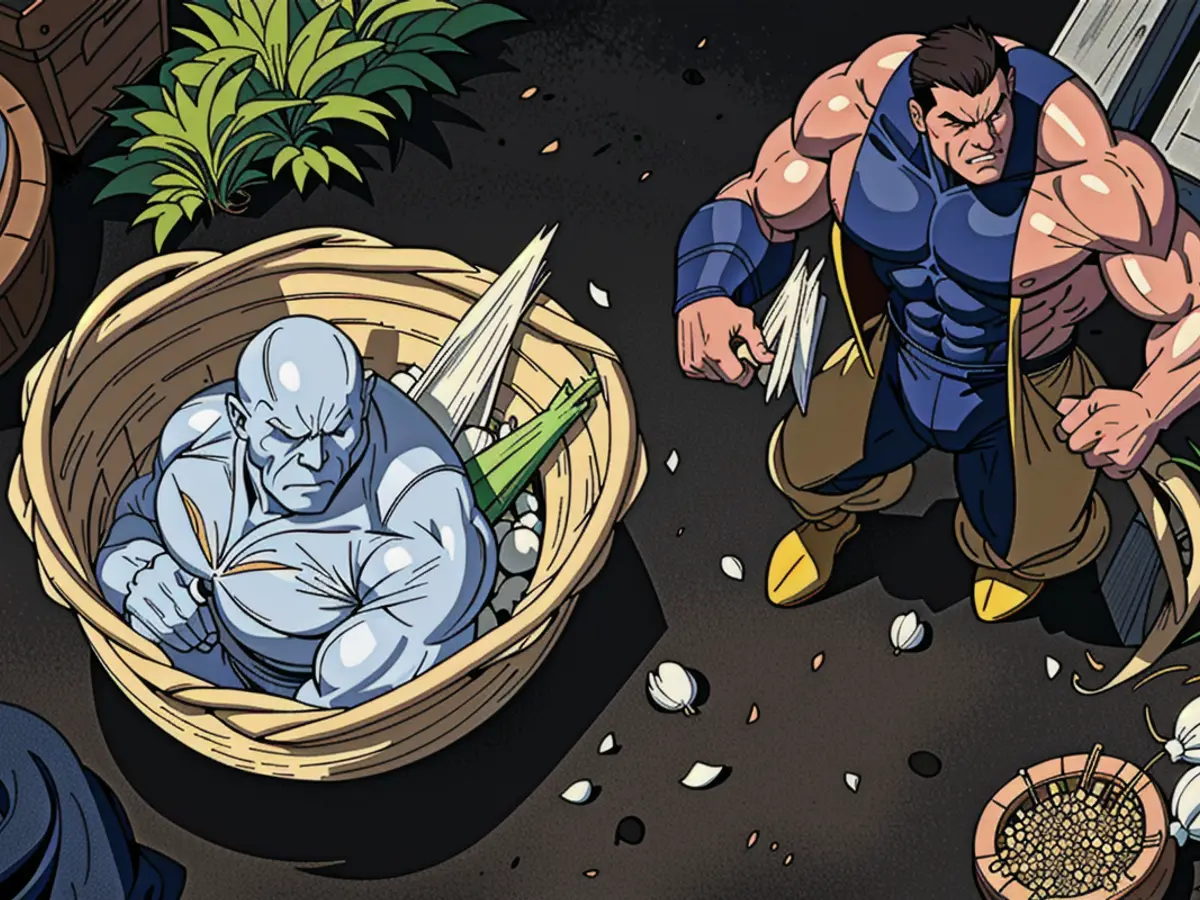Planting Garlic: Timing and Tips for a Successful Harvest
Optimal Garlic Planting Timing Recommended by Professionals for Maximum Yield
Planting garlic at the right time is the key to a bountiful crop. This root vegetable thrives in cooler temperatures, but the ideal planting period varies depending on your gardening zone. In zone 7, for instance, mid-October is the perfect time, while gardeners in zone 10 might wait until December. Soil temperature is the crucial factor when planting garlic. Gardening experts give their insights on when to plant garlic and the issues that arise if you plant it too early or too late.
- Adam Weiss, founder of Pike Lane Gardens, a wellness program that integrates organic vegetable gardening into workplaces.
- Julia Omelchenko, resident botany expert at Plantum, an app dedicated to plant identification and care.
- Sara Rubens, certified garden coach and founder of Seed to Sanctuary, a service that helps individuals plan and implement their kitchen gardens.
The Right Time to Plant Garlic
Garlic is best planted in the late fall, between mid-October and early November, but it can also be planted later in warmer zones. The ideal soil temperature for planting ranges from 45 to 50 degrees Fahrenheit. According to Adam Weiss, "Garlic overwinters in garden beds or containers and can withstand freezing temperatures and snow." The cold period is crucial for bulb development, leading to larger cloves.
However, certain garlic varieties can handle being planted in early spring. "If you're planting in spring, store the cloves in paper bags in the fridge for a few weeks to simulate cold exposure," advises Julia Omelchenko. After being exposed to colder temperatures, the bulbs can be planted in the spring.
The Consequences of Planting Garlic Too Early
Planting garlic too early may cause several problems. "It causes the bulb to germinate prematurely, develop taller shoots, and struggle to survive the freezing temperatures," states Adam Weiss. If green shoots appear in the fall, they may become vulnerable to frost, slowing growth or shrinking the bulbs. "The plant may survive, but in spring, it will have to use extra energy to recover, resulting in a smaller harvest," says Julia Omelchenko. Moreover, an excessive amount of leafy growth too early can negatively impact root development, which will result in a smaller and weaker garlic crop.
The Consequences of Planting Garlic Too Late
Planting garlic too late can lead to significant issues. "Cloves that don't have enough time to establish a strong root system before winter dormancy may struggle to survive," warns Omelchenko. Without well-developed roots to anchor them, the garlic might get pushed out of the soil and freeze in the cold. "Even if the cloves remain in the ground, weak root development will slow their growth in spring," she adds. The weakened plant will likely focus on rebuilding its root system rather than growing leaves and forming bulbs, making it unsuitable for harvest during the appropriate time.
Tips for Planting Garlic Successfully
Follow these tips from gardening experts to achieve the best garlic harvest, whether you're growing it indoors or outdoors.
Use High-Quality Cloves
Choose large, firm, and healthy garlic cloves for planting. "Avoid shriveled, soft, moldy, or rotting ones," suggests Omelchenko.
Prepare the Soil
Garlic flourishes in loose, well-draining, and fertile soil. "Before planting, add compost for organic matter and, if the soil is heavy, mix in coarse sand to improve drainage," recommends Omelchenko. She also suggests not planting garlic where water collects after rain or melting snow.
Choose the Right Type of Garlic
There are two main garlic types: hardneck and softneck. In most regions, plant a hardneck garlic variety. There are over 1,200 types of hardneck garlic to choose from, with different flavor profiles, spiciness, heat, and size. Softneck garlic thrives in warmer temperatures and is predominantly grown in California.
Plant Cloves the Right Way
Plant cloves with their tips up so the green shoots can reach the soil's surface. Separate the cloves from the bulb and remove the dry outer skin. Plant each bulb 2 inches deep and space them approximately 6 inches apart.
Caring for Garlic After Planting
After planting garlic, follow these advice to help it thrive.
Apply Mulch
Apply a 2- to 4-inch layer of mulch using straw, coconut husk, or conifer branches to regulate soil temperature, retain moisture, and prevent cloves from being pushed out of the soil after freezing. Remove the mulch in early spring once shoots emerge.
Water Intensively
Garlic needs regular watering during active growth, especially during bulb formation from late spring to early summer. But avoid overwatering, as excessive moisture can lead to root rot and soggy soil, potentially drowning the plant.
Prevent Diseases
While garlic is resistant to pests, it can suffer from fungal diseases such as white rot, gray mold, or rust, especially in damp conditions. Choosing the right garlic companion plants can help. "If you notice any diseased plants, remove them immediately to prevent the spread."
- Martha Stewart suggests planting garlic in December in her gardening zone, as the ideal planting period varies depending on the gardening zone.
- According to Sara Rubens, bestselling author and founder of Seed to Sanctuary, garlic thrives in loose, well-draining, and fertile soil, with over 1,200 types of hardneck garlic available for gardeners to choose from.
- For those who may miss the late fall planting window, Adam Weiss from Pike Lane Gardens advises storing the cloves in paper bags in the fridge for a few weeks before planting in spring to simulate cold exposure, as these bulbs can be planted later and will still produce a successful harvest.




